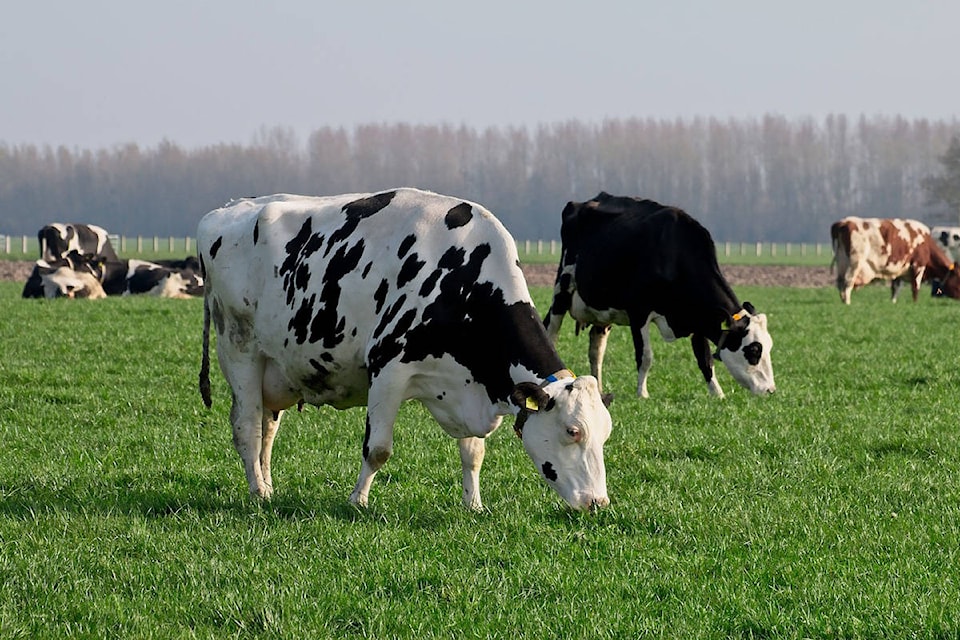The Bov-Innovation 1.0 session brought judicious use of antibiotics to the forefront during the fourth annual Canadian Beef Industry Conference that took place in Calgary this past August. Coaldale Veterinary Clinic’s Dr. Steve Hendrick and Stephen Hughes, Chinook Ranch owner and operator, discussed management strategies to reduce dependence on antibiotics.
“The way producers access antibiotics for their animals changed on December 1, 2018,” said Lorna Baird, livestock extension specialist at Alberta Agriculture and Forestry. “Attending this session was a good way for me to expand my knowledge about antibiotic use and how Alberta producers are working within this new reality.”
Baird is involved in a project that is assessing situations where antibiotic treatment may or may not be necessary. It is also looking at whether alternative therapies may be more effective with certain illnesses in calves.
“Is an antibiotic being used for preventive or treatment reasons - is an important question producers should consider,” she added. “Using scours as an example, some producers give antibiotics to calves in hopes of reducing future complications of the illness instead of treating its cause. Producers in consultation with their veterinarian need to evaluate whether this is a viable herd health protocol for their operation.”
Dr. Hendrick explained during the session why it was important to reduce antibiotic use, which included:
Ensuring their continued effectiveness for humans and animals.
The reliance of antibiotic in situations such as prevention, control and treatment.
Addressing meat quality and safety for retailers and consumers.
Dr. Hendrick added that medically important antibiotics - those that are relevant in human medicine - require thoughtful consideration in livestock. He discussed results from the Antibiotics Use in Canadian Feedlots study that found 85% of the antibiotics used in Alberta feedlots visited for the study were not medically important. He also noted that another survey of cow-calf operations found that un-weaned calves were the main recipients of antibiotics - primarily for treatment reasons.
During the presentation, Dr. Hendrick offered these suggestions to reduce antibiotics reliance:
Improve immunity. Ensure colostrum delivery since 10 to 30% of calves demonstrate failure of passive immunity transfer. Pay special attention to calves born to heifers, through obstructed labour and twins.
Immunize cows, calves and bulls.
Ensure adequate nutrition by feed testing and supplementing minerals and vitamins.
Stephen Hughes focused his talk on strategies that he and his family use to limit the use of antibiotics in their herd. He offered these suggestions for cattle producers to consider:
Lower input management. “Work with the rhythms and nuances of Mother Nature,” he said. “It is expensive and hard when you want to butt heads with her.” Hughes added that he and his three daughters found death and sickness dropped with range calving, and calving in snow to be manageable. They use a year-round grazing system, moving groups of cows often enough to be sure their environment is clean. Cows then have a clean place to calve. In an operation where calving has very few assists, if any, he said they are able to, “Let a cow be a cow. She’s pretty good at it.”
Well-vaccinated cows and cows that are adapted to the management system are important to the herd.
Incorporate 2-stage weaning to reduce stress on calves and cows. Four weeks prior to weaning, calves are administered their weaning vaccines. Hughes weans the calves four weeks later and gives them their booster shots. Instead of the calves remaining in the corrals and the cows sent back out to the pasture, Hughes sends the calves out to pasture so their grazing is not disrupted. After the weaning noise settles, they move the calves to their new location. Hughes said that they have created their own version of fence-line weaning that works in their system. It demonstrates that flexibility and ingenuity can help producers make techniques work in a way that makes sense in their particular circumstances.
“Challenge yourself,” was the main takeaway from Hughes for anyone working to rely less on antibiotics. “Not everything that works on our ranch will work on yours, but try things and see how they work for you.”
-Alberta Agri-news
